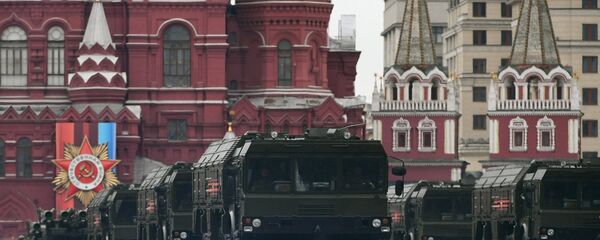KOLOMNA (Sputnik) — Russia's Research and Production Corporation Konstruktorskoye Byuro Mashynostroyeniya (RPC KBM), known as the developer of the Iskander missile systems, takes the limitations imposed by the Intermediate-Range Nuclear Forces (INF) Treaty into consideration when developing new weapons, the company's general designer said Thursday.
"We take into consideration [the provisions of the INF Treaty] very carefully and take steps in order to avoid any quibbling," Valery Kashin told reporters.
He also spoke about the Iskander-M tactical ballistic missile system's capabilities, saying that it can fire seven different types of missiles.
"Even after completing the state testing of the system, in 2012, we realized that we had not exhausted all the potential of Iskander, we have been continuing development of new missiles. Iskander-M is now equipped with seven types of missiles, and may be even more," Kashin said.
The Russian Defense Ministry has approved a plan to modernize the Iskander-M, which is expected to be in service in the Russian army in the next 20-30 years, he added.
The Iskander-M (NATO reporting name SS-26 Stone) is a mobile short-range ballistic missile system designed to destroy a wide variety of ground targets at a range of up to 500 kilometers (over 300 miles). At present, the supply of Iskander-M brigade-size sets to the Russian army is being completed, under a contract signed with the Defense Ministry in 2011 (the whole agreement provides for the supply of 10 brigade sets).






